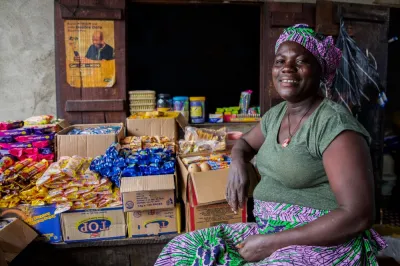How Long Should It Take to Build a Home?

Families often lack the proof of income and credit history necessary to secure a traditional mortgage. Without proper title documents for their land or existing home, many are also ineligible for affordable mortgage solutions. As a result, it can take up to 30 years for some families to complete their home.
At Habitat for Humanity's Terwilliger Center for Innovation in Shelter, we are driven to understand low-income individuals and families so we can better serve their housing needs. To better support these families,
Revisiting product design for housing microfinance
For low-income families, their best option for housing finance is often a housing microfinance (HMF) loan. These loans are generally collateral-free (unsecured) with fewer documentation requirements, making them accessible to families with informal employment. However, these loans are typically smaller ($200-$3,000) with shorter terms (one to three years) than a mortgage. As a result, they’re often insufficient to fully fund a home’s construction.
In India, for example, the Terwilliger Center conducted an evaluation of a microfinance institution (MFI) offering a loan size of $2,300 with a maximum tenor of three-years. Despite developing a product intended to help low-income families access safer shelter, only 20 percent of the MFI’s HMF clients were completing their housing projects to a level deemed habitable. One customer, who was representative of the MFI’s clientele, was looking to build a house on a plot of land owned by her family. She had plans and cost estimates drawn up by a local engineer that pegged the total construction cost at $9,459. To finance the project, she would have needed to take at least four consecutive loans in order to complete her home.
 This scenario has been ubiquitous in the Terwilliger Center’s market studies. A single HMF loan is often insufficient to complete construction on a home and many families take on subsequent loans over the next two to three years to complete the construction or undertake further improvements to their house.
This scenario has been ubiquitous in the Terwilliger Center’s market studies. A single HMF loan is often insufficient to complete construction on a home and many families take on subsequent loans over the next two to three years to complete the construction or undertake further improvements to their house.
Finding a solution somewhere in the middle
MFIs want to offer products with stronger market fit that meet their clients’ needs. But they face a number of factors that keep them from offering larger loans, including asset-liability mismatch, no credit underwriting model to facilitate longer-term solutions, staff capacity issues and regulatory hurdles. Since MFIs are not able to offer affordable mortgage solutions, is there a different structure of microfinance product they can offer to improve customer experience and expedite the incremental construction process?
The answer may be offering a financial solution that lies somewhere in the middle of affordable mortgages and housing microfinance. Let’s look at a simple sensitivity analysis in which the same family earning an average of $350 household income obtains different loan amounts based on various tenor options, with all other attributes constant:
With extended loan tenor, the same family can obtain a higher loan amount and expedite their construction journey. Moreover, if the HMF loan is supplemented with proper technical construction support, they can put this amount to its best use by prioritizing construction activity that leads to improved quality and functionality of the home. In the case of the Indian MFI, 64 percent of customers wanted a loan tenor of more than three years.
While this solution does not completely address the challenges facing low-income families, it can enable them to obtain a more appropriately sized loan. Our research has shown that the loan size directly influences construction quality, likelihood of completion and customer satisfaction.
Systemic changes are needed for this to work
The need for this type of product innovation extends beyond one institution or country. In order to ensure the feasibility and viability of such solutions long-term, a number of systems-level shifts are ultimately needed. First, capital providers, such as impact investors and local banks, must provide MFIs with access to longer-term capital for the on-lending. Local capital markets thus need to foster enabling environments that facilitate cash exchange between investors and intermediaries. Most importantly, MFIs will have to adjust their delivery systems and invest in credit underwriting, credit monitoring, loan utilization and staff capacity so that they can appropriately manage longer-term loans for informal segments. This area is critical as providers must exhibit high adherence to consumer protection and responsible finance practices.
While the system changes needed are substantial, progress in the housing microfinance space over the past 10 years has been excellent. Habitat’s own MicroBuild Fund is the first fund dedicated to supporting MFIs to develop or expand HMF solutions with capital and customized advisory services. Solutions developed by Habitat’s partner financial institutions have helped millions of families to date.
A financial institution’s product development journey should always be about striving for the best customer experience, with continuous iterations in product design and delivery. As a broader set of financial intermediaries enter the housing market, we have new opportunities to pursue innovations in product design for better market fit and customer experience.



This is spot on. Being born in Liberia, an emerging market, I remember how long it took for my parents to build our family house (approximately 20 years). This was over 30 years ago, however, that process is still very prevalent due to lack of access to suitable financial instruments to build your house.
Leave a comment